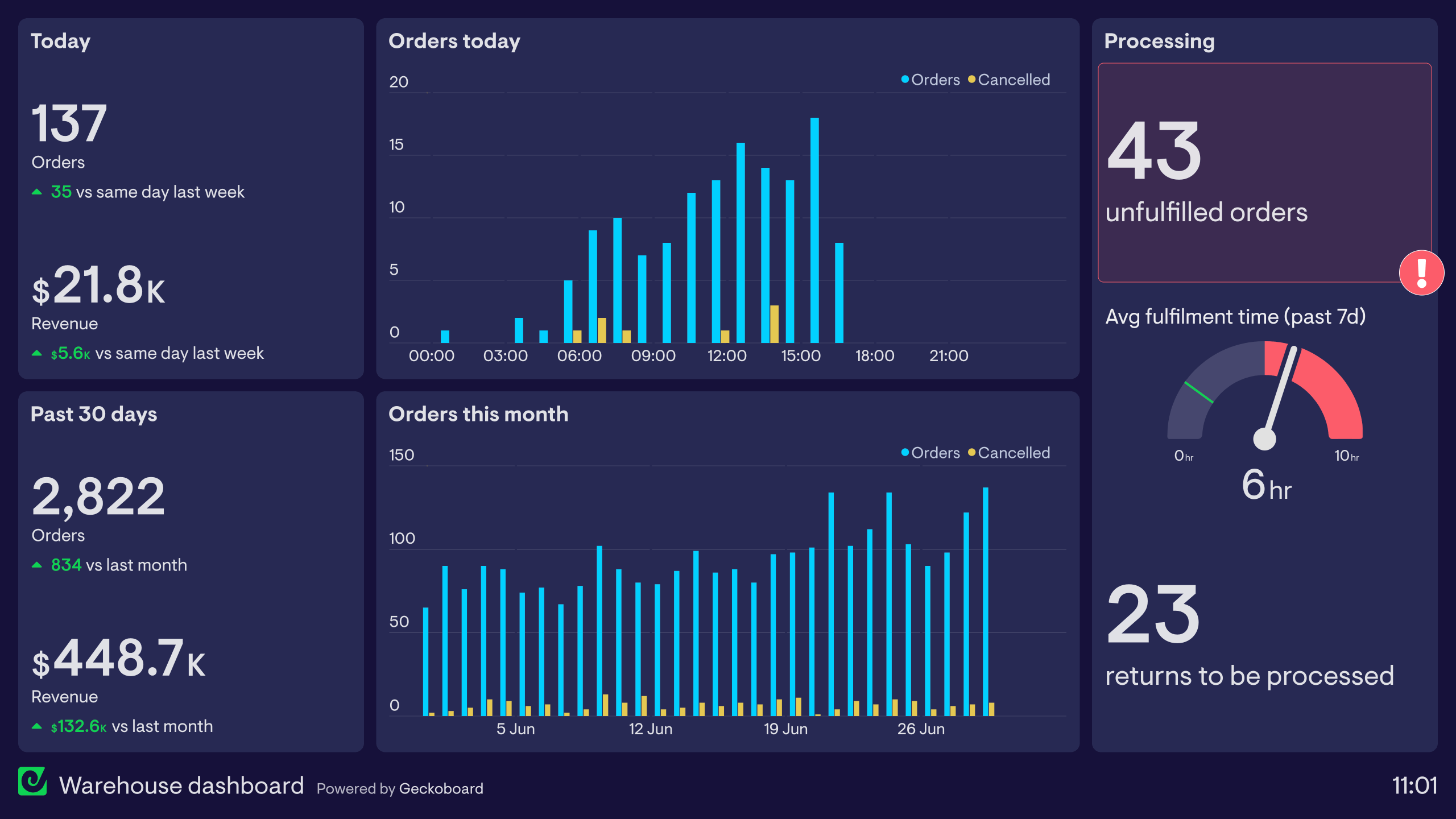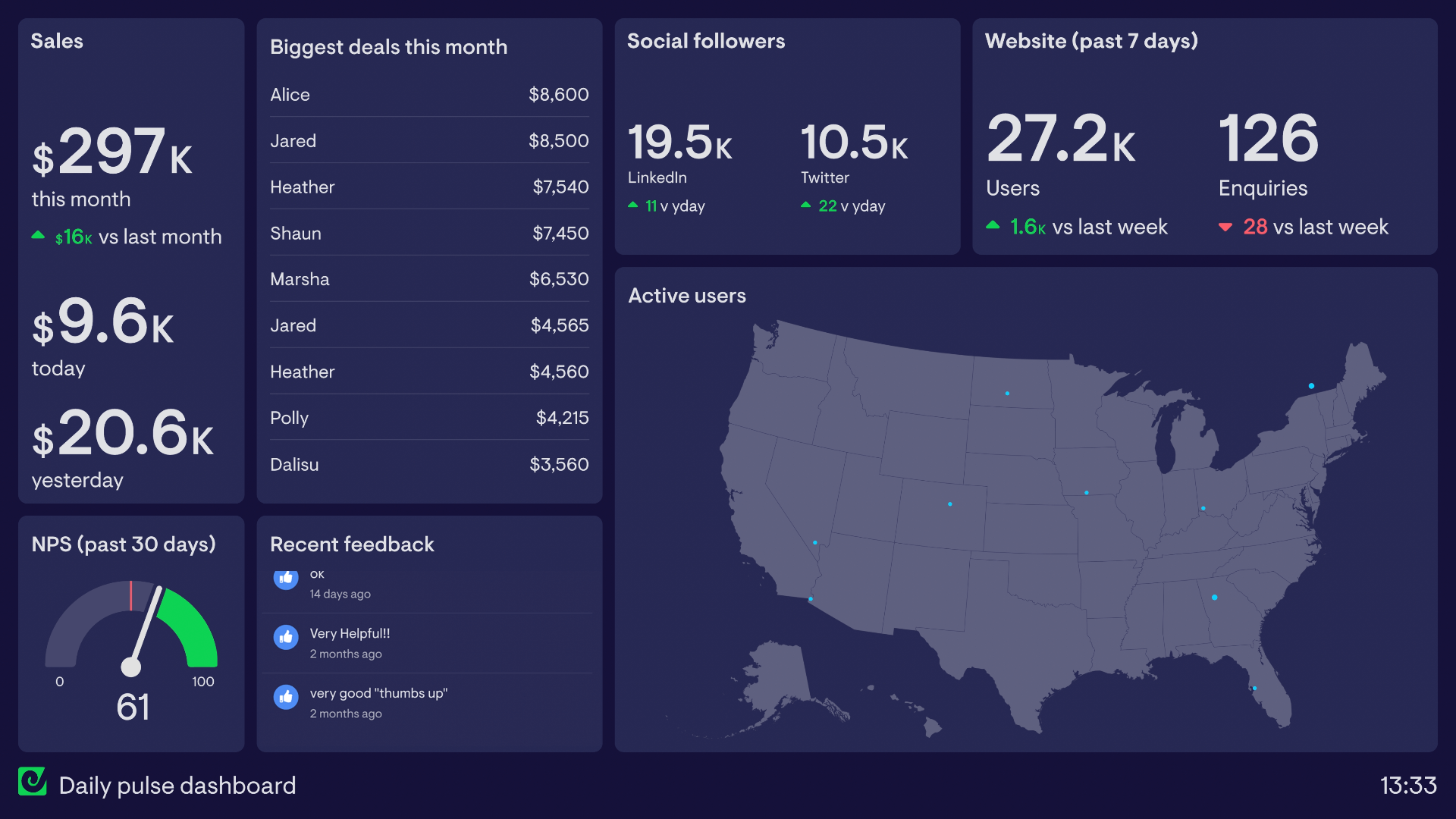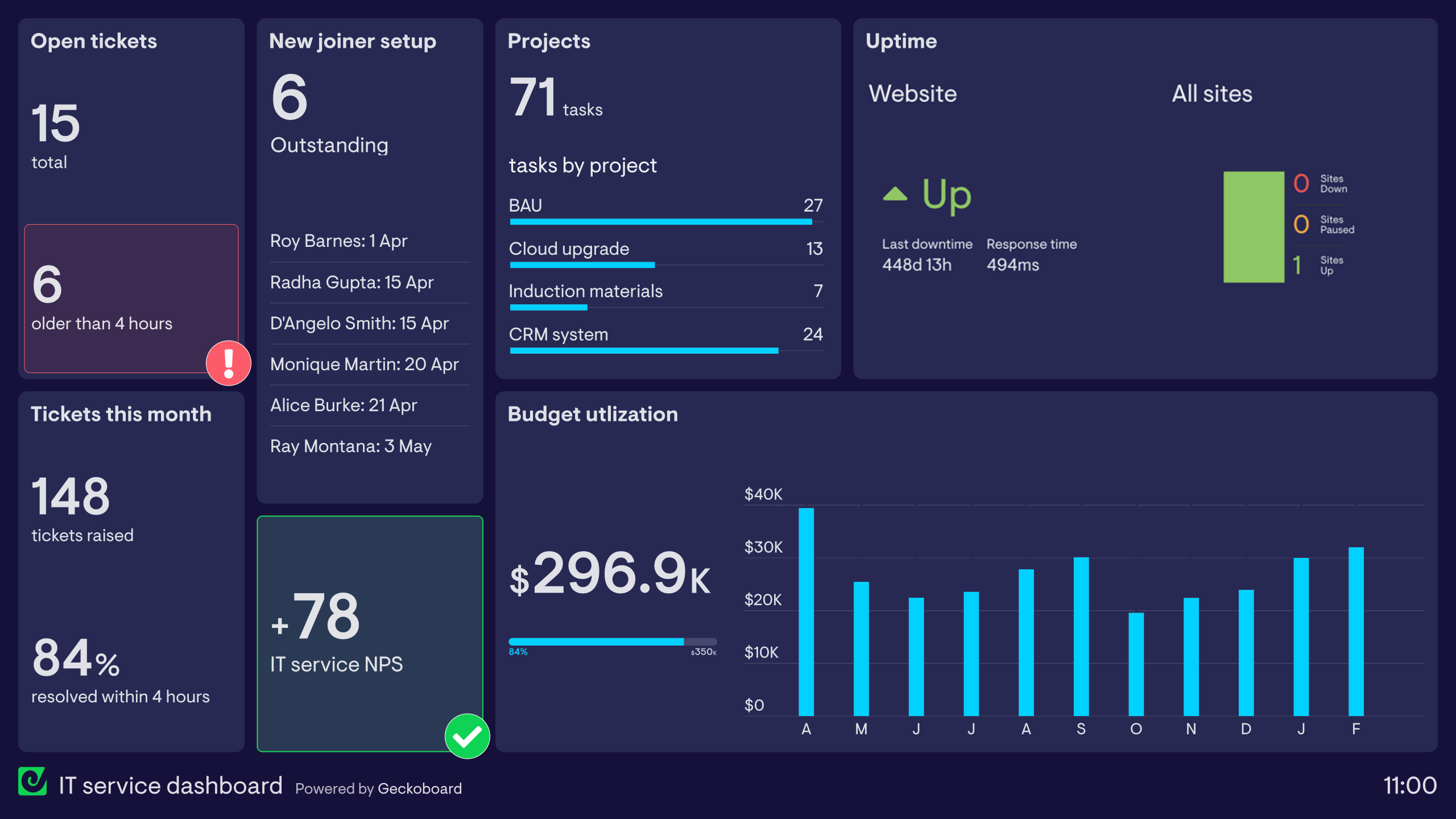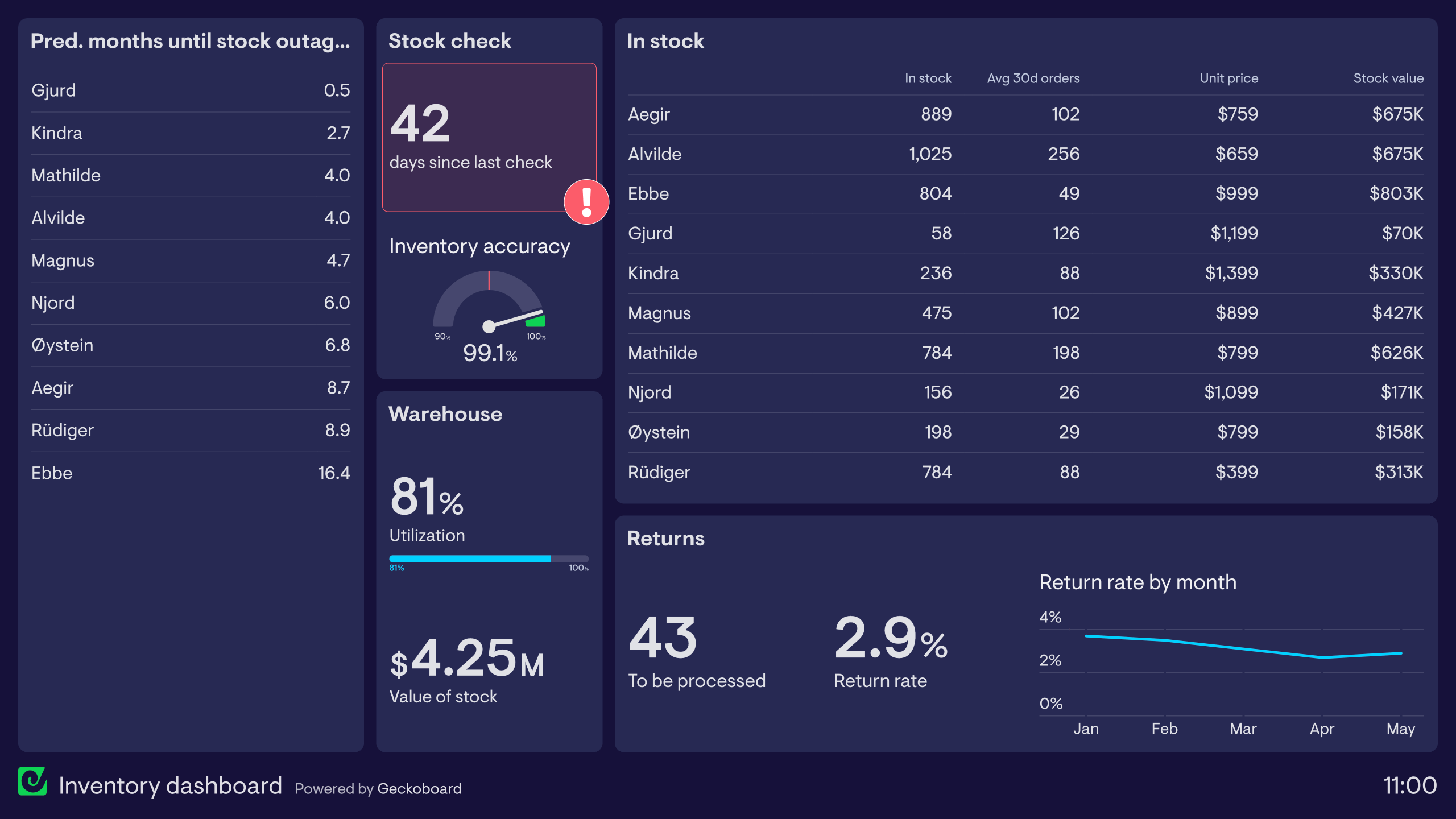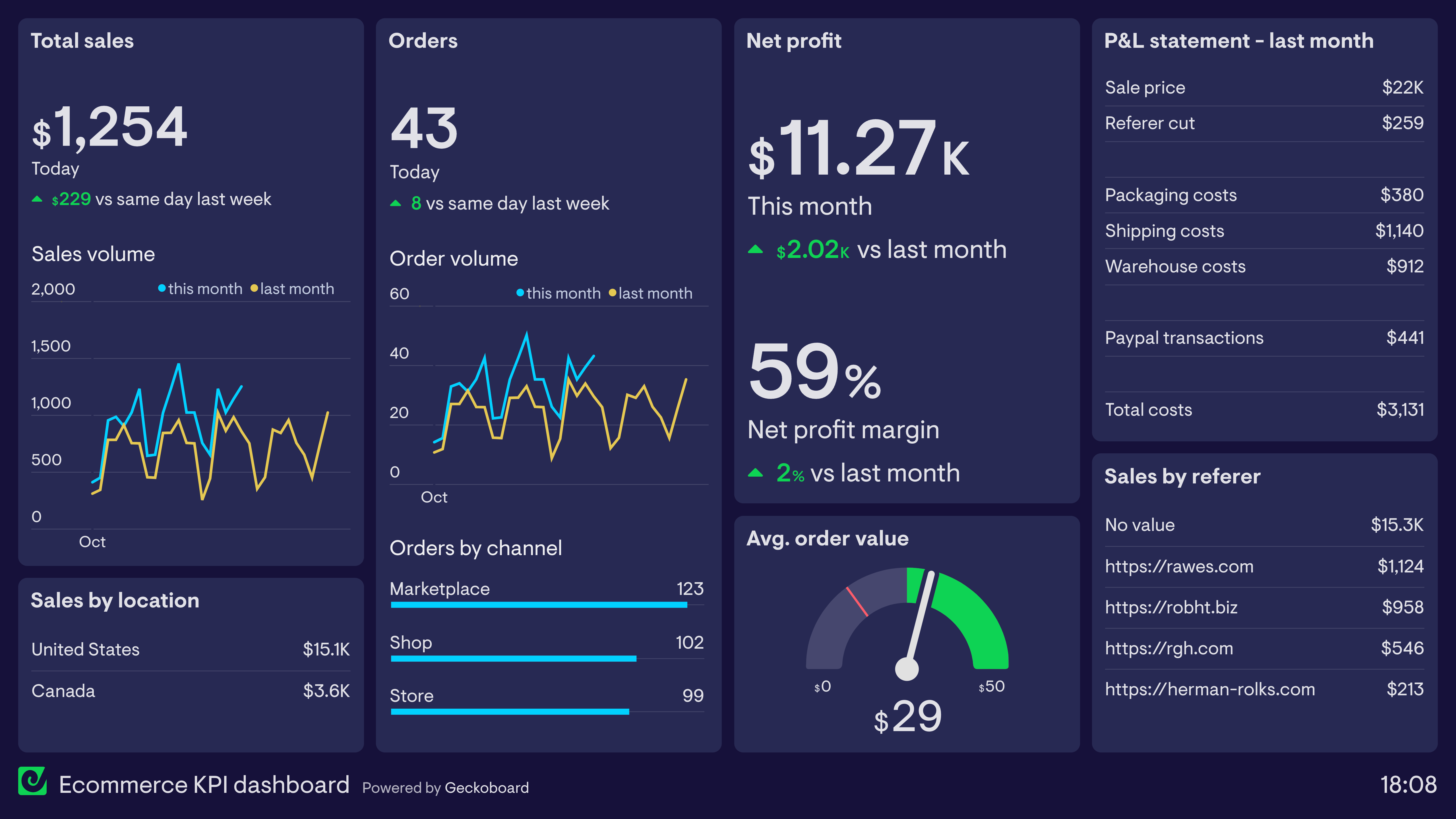What is a warehouse dashboard?
Warehouse dashboards display live order information, so that team members in the warehouse can anticipate busy periods, respond to demand, and meet their fulfillment goals.
Because members of the warehouse team are usually on their feet with no immediate access to a computer, it can be difficult to keep them in the loop on important live metrics, such as new orders. A warehouse dashboard is normally displayed on one or more TV screens around the warehouse, meaning they always have clear sight of any new developments.
Warehouse dashboard
This warehouse dashboard example is taken from an ecommerce company. It displays live data from Shopify, their ecommerce platform. The dashboard helps fulfillment teams keep track of particularly busy periods, changing their approach to meet demand.
As they use the dashboard over time, the team builds up a familiarity with the metrics; they start to intuitively understand when busy periods are likely to be, or even when metrics are out of the ordinary.
The dashboard visualizes revenue generated. Some would argue that this is not necessary information, as the fulfillment team is primarily concerned with orders. However, using dashboards to communicate high-level metrics like these can have a motivating effect, because the teams using them begin to feel shared ownership for the company’s overall success.
Focus area
Live orders, fulfillment
Who looks at it?
Warehouse team, fulfillment team
How often?
Several times a day
- ShopifyGoogle SheetsExcelSpreadsheets
